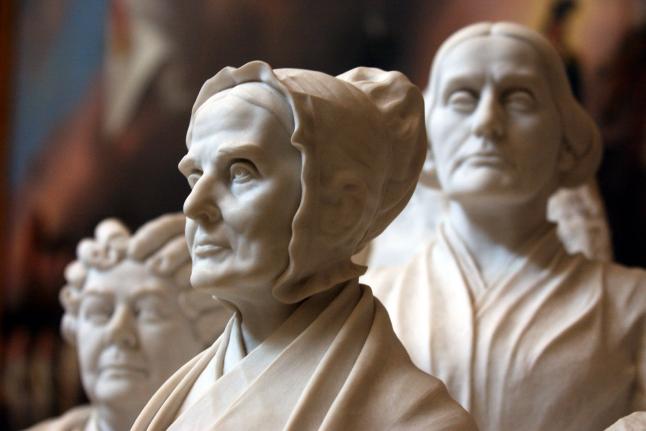WASHINGTON, Aug. 17 (UPI) — Ninety-five years ago today, the 19th Amendment to the U.S. Constitution was ratified, giving women the right to vote after a decades-long movement that could land a suffragette on the upcoming redesign of the $10 bill.
On Aug. 18, 1920, Tennessee became the 36th state to ratify the 19th Amendment, the last state needed to make the women’s vote official. One week later, Secretary of State Bainbridge Colby officially signed the amendment, and members of the National Women’s Party immediately held a “jubilation” at their headquarters in Washington, D.C., a UPI article at the time said.
Several members of the party were present for the official ceremony, including Alice Paul, chairwoman of the party. They represented decades of women fighting for the right to vote since as early as 1840.
Women’s suffrage in the United States is largely thought to have officially begun in 1848 when some of the more well-known members of the movement held the Seneca Falls Convention in New York. Some 300 men and women attended the convention, which was organized in part by Elizabeth Cady Stanton and Lucretia Mott.
Susan B. Anthony — one of a few female figures to be featured on U.S. currency — met Stanton just a few years later and together the three would become the most visible fighters for women’s suffrage in the United States.
Though largely an abolitionist, Sojourner Truth would also join the cause, calling for the equal right to vote since she and other women were required to pay taxes.
The four women, along with Paul, came to be symbols for the broader struggle for women’s rights, and as such are likely to be considered for the first female featured on U.S. paper currency in more than 100 years.
In June, U.S. Treasury Secretary Jacob Lew announced that in 2020 — the 100th anniversary of the ratification of the 19th Amendment — a historic female will grace the $10 bill. He said the as-yet-unchosen woman would be “a champion for our inclusive democracy,” indicating there’s a decent chance the woman could be a suffragette.
It’s unclear when Lew will announce the female subject of the $10 bill — the first Treasury secretary, Alexander Hamilton, will remain on the bill in some fashion — but there’s been some speculation, thanks to the “Women on 20s” campaign.
The petition seeks to have former U.S. President Andrew Jackson replaced on the $20 bill by African-American abolitionist Harriet Tubman. Organizers of the campaign picked Jackson for replacement because of his role in Native American relocation policies and opposition to the central banking system.
The campaign conducted a poll and found Tubman was the most popular choice, though Paul, Stanton and Anthony each placed within the top 15 women.
Another poll conducted more recently by Marist, found that most Americans want former first lady Eleanor Roosevelt to grace the $10 bill. Anthony also received some votes in that poll.



